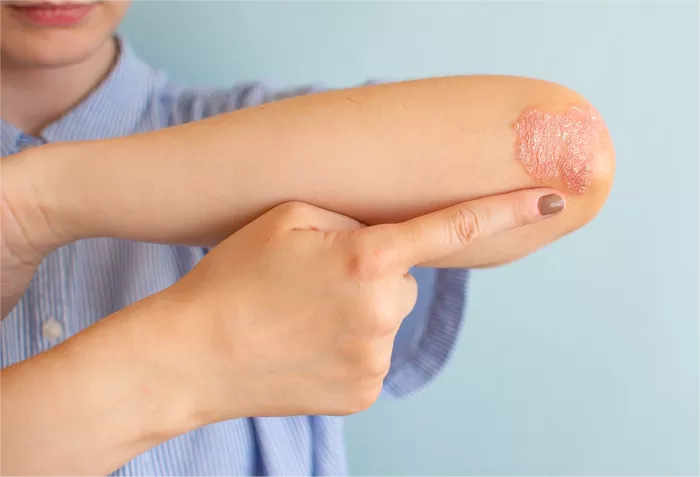Hidradenitis Suppurativa (HS) is a chronic inflammatory skin condition characterized by painful, recurrent nodules, abscesses, and sinus tracts, primarily affecting areas with apocrine glands, such as the armpits, groin, and buttocks. Individuals with HS often face numerous challenges in managing their condition, including navigating the complexities of personal grooming routines. Among these considerations is the question of whether waxing is a safe option for hair removal for those living with HS.
Waxing, a common method for hair removal, involves applying hot or cold wax to the skin, allowing it to adhere to the hair, and then quickly pulling the wax off, removing the hair from the root. While waxing can provide smooth skin for an extended period, it may present unique challenges and risks for individuals with HS. Understanding these risks and considerations is crucial for making informed decisions about hair removal methods.
The Challenges of Hidradenitis Suppurativa
HS poses several challenges that can complicate traditional hair removal methods like waxing. The primary concern is the potential for exacerbating existing lesions or triggering new flare-ups. HS lesions are prone to inflammation, infection, and pain, and any trauma to the affected areas can worsen symptoms and prolong healing times.
Furthermore, the delicate nature of HS-affected skin requires gentle care to avoid further irritation and damage. Traditional waxing techniques involve pulling hair out from the root, which can be painful and traumatic to sensitive skin, potentially leading to increased inflammation and discomfort.
Risks Associated with Waxing
For individuals with HS, waxing carries several inherent risks that warrant careful consideration:
1. Increased Risk of Trauma: The act of waxing involves forcefully removing hair from the follicles, which can traumatize the skin surface. In individuals with HS, this trauma may exacerbate existing lesions, leading to pain, inflammation, and potential infection.
2. Risk of Folliculitis: Folliculitis, the inflammation of hair follicles, is a common complication of waxing. In individuals with HS, the risk of folliculitis may be heightened due to the compromised nature of the skin and the presence of existing lesions. Folliculitis can lead to further discomfort and may contribute to the development of new HS lesions.
3. Potential for Scarring: HS lesions often heal slowly and may leave behind scars. The trauma inflicted during waxing can increase the risk of scarring, particularly in individuals prone to keloid formation or those with severe HS.
4. Pain and Discomfort: Waxing can be a painful experience even for individuals without HS. For those living with the condition, the pain associated with waxing may be heightened due to the hypersensitivity of the affected skin.
Alternative Hair Removal Methods
Given the potential risks associated with waxing, individuals with HS may consider alternative hair removal methods that are gentler on the skin and less likely to exacerbate symptoms. Some alternatives to waxing include:
1. Shaving: Shaving is a popular and convenient hair removal method that carries fewer risks of trauma compared to waxing. However, individuals with HS should take care to use sharp, clean razors and gentle shaving techniques to minimize irritation.
2. Depilatory Creams: Depilatory creams work by chemically breaking down the hair shaft, allowing it to be easily wiped away. While depilatory creams may be less traumatic than waxing, individuals with HS should patch test any products on a small area of skin to check for adverse reactions before use.
3. Laser Hair Removal: Laser hair removal targets the hair follicles, inhibiting hair growth over time. While laser hair removal may offer long-term benefits for individuals with HS, it is essential to consult with a dermatologist experienced in treating HS to assess the suitability of this option and minimize the risk of adverse effects.
4. Electrolysis: Electrolysis involves the insertion of a fine needle into each hair follicle, delivering an electrical current to destroy the hair root. Like laser hair removal, electrolysis offers long-term hair reduction but requires multiple sessions for optimal results. Individuals with HS should discuss the potential risks and benefits of electrolysis with a qualified practitioner.
Precautions for Waxing with Hidradenitis Suppurativa
If an individual with HS decides to pursue waxing as a hair removal method, several precautions can help minimize the risk of complications:
1. Consult with a Dermatologist: Before undergoing waxing or any other hair removal procedure, individuals with HS should consult with a dermatologist familiar with the condition. A dermatologist can assess the severity of the HS, provide personalized recommendations, and offer guidance on minimizing potential risks.
2. Choose a Experienced Practitioner: If opting for professional waxing services, individuals with HS should choose a licensed esthetician or waxing specialist experienced in working with sensitive skin conditions. Communicating openly about the presence of HS lesions and any areas of concern can help the practitioner tailor the treatment to minimize discomfort and trauma.
3. Test Sensitivity: Before proceeding with a full waxing treatment, individuals with HS should conduct a patch test on a small area of unaffected skin to assess sensitivity and ensure that the waxing process does not exacerbate symptoms.
4. Preventative Measures: Taking preemptive measures to reduce inflammation and infection risk before waxing can help mitigate potential complications. This may include applying a soothing, anti-inflammatory cream or taking pain-relieving medication as directed by a healthcare professional.
5. Post-Waxing Care: Following waxing, individuals with HS should practice meticulous post-care hygiene to prevent infection and promote healing. This may involve gently cleansing the treated area with a mild, fragrance-free cleanser and applying an antibacterial or soothing cream recommended by a dermatologist.
Conclusion
Waxing can be a convenient and effective method for hair removal, but individuals with Hidradenitis Suppurativa must approach it with caution due to the potential risks of exacerbating symptoms and complications. Consulting with a dermatologist, exploring alternative hair removal methods, and taking precautions to minimize trauma and inflammation are essential steps for safely managing hair removal in individuals with HS. By prioritizing skin health and adopting a personalized approach to grooming, individuals with HS can maintain smooth, hair-free skin while minimizing the impact on their condition.
Related Topics:
Is Hidradenitis Suppurativa (HS) Considered a Disability?

























